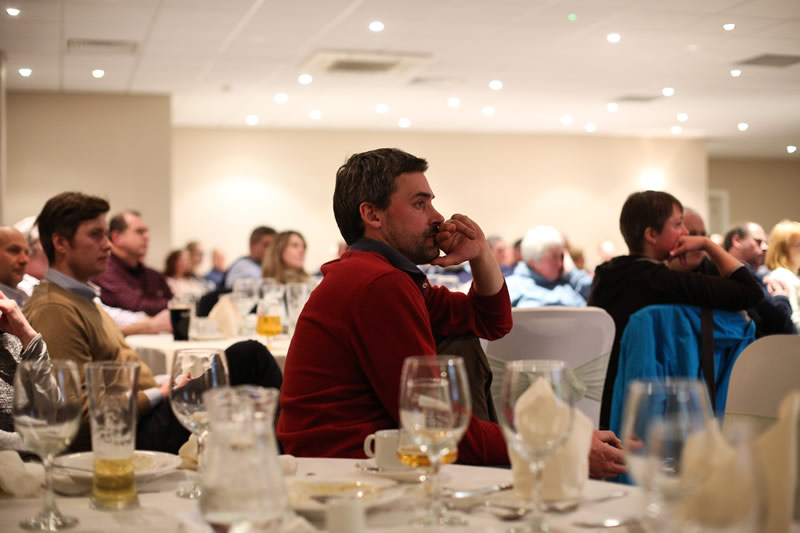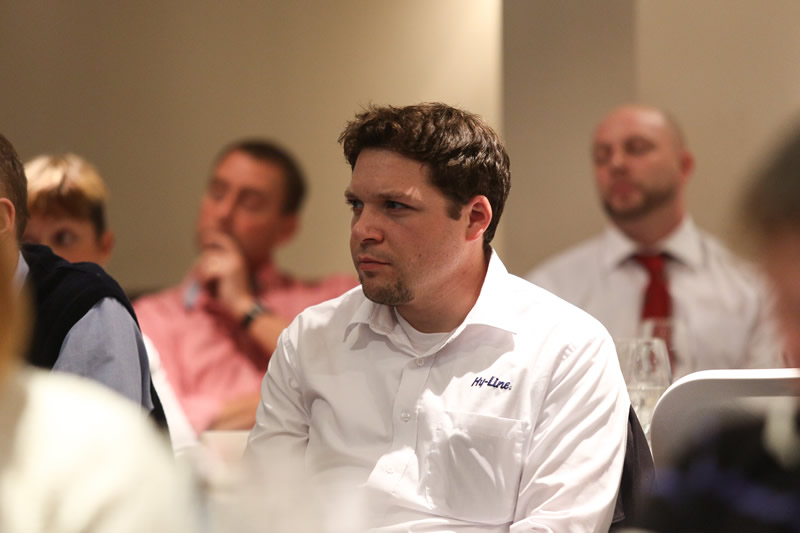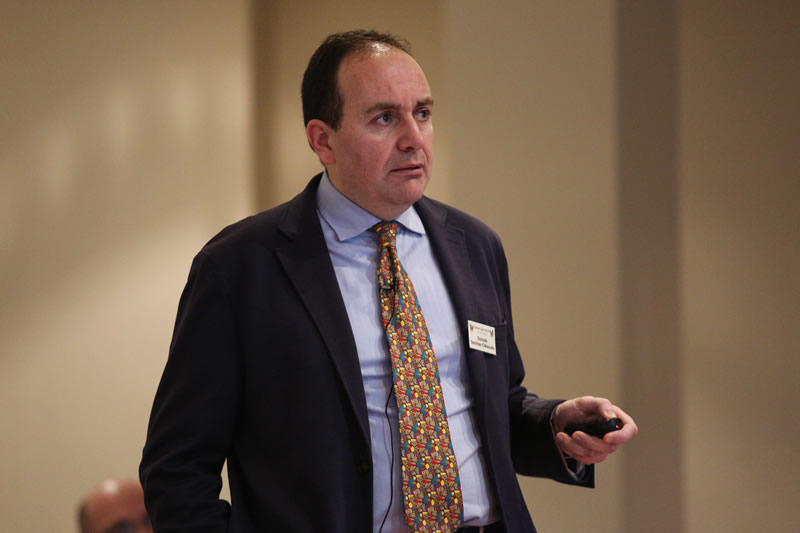
An American vet has told British producers of a cheaper and quicker way to deal with secondary cleansing and disinfection following avian influenza.
The huge clean-up costs following bird flu have become a major concern for the egg industry in the United Kingdom. Cleansing and disinfection following the recent outbreak in Lancashire cost £500,000. A representative of the Animal and Plant Health Agency (APHA) told egg producers at a meeting in Yorkshire that APHA was looking at the possibility of a “more proportionate” solution. An American vet at the meeting, Ian Rubinoff, said US authorities had already approved one.
Ian, who is a technical services vet with Hy-Line, was in the United Kingdom for a company meeting and took the opportunity to attend a gathering of the Yorkshire Egg Producers Discussion Group near York.
He is normally based in Iowa and said that the closest outbreak during an AI epidemic in the US that wiped out 43 million hens and seven million turkeys across more than 20 different states was just 20 miles away from the Hy-Line complex. “We were on high alert for about nine months. I’ll never forget April 19, 2015 when first outbreak in Iowa was diagnosed,” he said. “Our last outbreak was on June 17. Our last secondary disinfection was on September 21. Our country of freedom was then approved on December 21."
“There were 223 outbreaks. Of those 65 to 70 were layer complexes. The rest of them were single house or double house turkey complexes. The turkey houses are a lot easier to clean and disinfect to a more rapid degree. For the larger layer complexes, the USDA (United States Department of Agriculture) approved heat disinfection as a secondary C and D approval. That involved keeping those houses at 38 to 50 degrees centigrade for seven days. Yes, that will melt your water lines, in case you are wondering. But that is a lot less expensive than going in there doing the full cleaning and disinfection.”

He said sensors were placed inside poultry houses, and if the temperature dropped below the designated level at any time the “clock re-started.” Following heat disinfection, the USDA took copious amounts of swabs inside the buildings to ensure there was no influenza left. Following successful sampling, re-stocking of the houses took place within three weeks, he said.
One thing that hampered re-stocking was the availability of poults or chicks for laying farms, he said. “A lot of producers went in at three quarters capacity or half capacity just to get started again. Of course, they did have to take the 21-day samples similar to here afterwards to ensure the flocks were negative.”
Here in the UK, the poultry industry has been seeking ways to cover the huge cost of secondary cleansing and disinfection, which has to be borne by the owner of the unit affected. Staveley’s Eggs in Lancashire, which was hit by an outbreak of highly pathogenic influenza, has revealed that the total cost of the outbreak was more than a million pounds. The British Free Range Egg Producers Association (BFREPA) has agreed a deal with broker Scrutton Bland to help insure the clean-up costs. The egg industry is encouraging others to do the same after the poultry industry had failed to agree a deal to implement a levy after the levy proposal was rejected at the BEIC (British Egg Information Council) meeting on Wednesday in favour of Insurance.

The egg industry is also talking to Government organisations to see whether it is possible to reduce the burden of secondary C and D without increasing risk. Gonzalo Sanchez-Cabezudo, veterinary head of field delivery in the North of England for APHA, told those attending the discussion group meeting near York that it would probably be necessary to review the way that secondary C and D was done in the UK.
One producer at the meeting suggested to him that, given the huge cost involved in secondary C and D, wouldn’t it make more sense for producers to simply leave their units empty for a year, when they would eventually be considered disease free.
Gonzalo Sanchez-Cabezudo said, “The cost to the business in Lancashire in terms of secondary C and D was around half a million pounds more or less. The C and D must be proportionate to the risk and we are looking now whether we could have a more proportionate way of doing the disinfection and we are working with industry about that.” He said the way secondary C and D carried out in the Netherlands would be looked at.
Ian Rubinoff told those attending the meeting that one of the things to come out of the United States outbreaks was the need to deal with them far more quickly. He said the United States had been too slow to deal with the AI when it appeared and the egg industry was seeking to ensure that would not happen again.
“Our new rules are, at least for anyone in the layer industry, are more or less approved among ourselves – and the USDA has said we can go ahead. Our goal is that from time of confirmation to the time that the entire complex is dead is no more than 24 hours. The risk of spreading for any longer than that is what happened in the United States,” he said.
He said it took some complexes in the United States 21 days to fully depopulate trying to use manual labour. “I know the farm sizes are a little bit different between here and the United States but the densities can certainly be the same in some of these areas. We did not respond fast enough at all. So that is one of the things we have resolved – if this ever happened again we need to be a lot faster and 24 hours needs to be our drop dead deadline because we are going to be putting a whole industry at risk if we don’t do it that quickly.”
The British Free Range Egg Producers Association introduced an insurance initiative where their members are insured up to a maximum of £50,000 from a total funded scheme of £1million as long as the members have paid their subscriptions on time and declared their correct bird numbers.
Nearly 100 people attended the discussion group meeting, which was held at Huby, near York. The meeting was chaired by Roger Lythe, co-ordinator of the Yorkshire Egg Producers Discussion Group. Speakers were introduced by Richard Byas of Sandhill Veterinary Services of Topcliffe, Thirsk.
